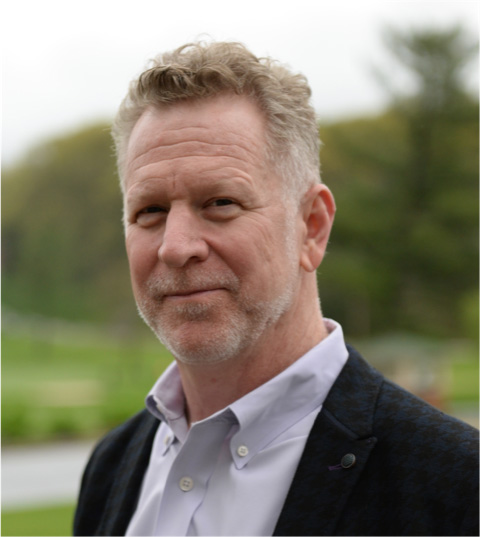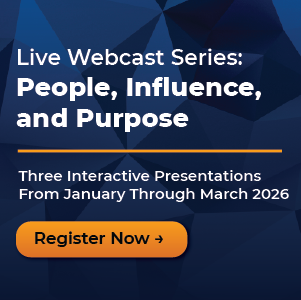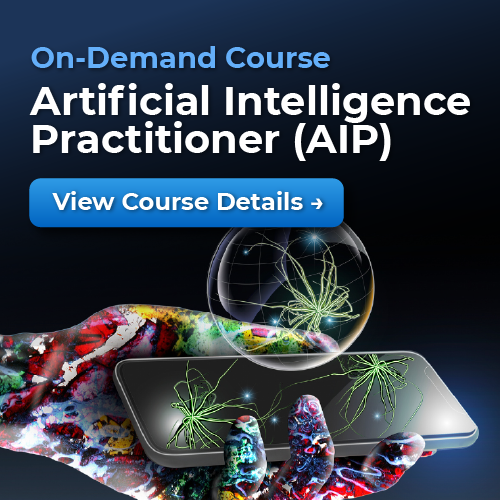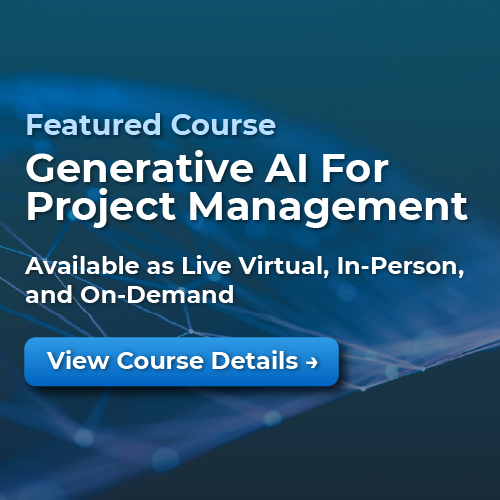By Alan Zucker
September 4, 2024
A project manager’s first major decision is selecting the approach and lifecycle. Historically, this was a non-issue. The default option was preordained based on the project type, organizational preferences, and inertia.
Construction and engineering projects were always predictive. For software projects, organizational factors outside the project manager’s control often drove the predictive versus agile
decision. Ad hoc and homegrown project approaches skipped standard practices and lacked repeatability or consistency.

Selecting the project approach should be thoughtful and intentional. There are several decision-making rubrics and no “right” answers. Each project and team is unique. Understanding the context and considering the options is critical.
Two predominant factors influence the approach-selection decision are:
- Problems and solution space. What is the nature of the problem? Which approach will likely lead to a successful solution?
- Organization and people. What organizational factors should be considered? What is the project team’s skillset and maturity level?
Problem and Solution Space
Project solve problems. Understanding the problem space provides context for structuring the approach to the solution. David Snowden’s Cynefin Framework is a sense-making model. It categorizes problems into four primary types:
- Simple. Problems that are well-understood and have clear cause-and-effect relationships. The solutions are straightforward and can be solved using established procedures. Standardization improves efficiency.
- Complicated. Problems with multiple potential solutions. Expertise is required to analyze the problem and develop the approach. Engineering and new product development are examples.
- Complex. Problems characterized by uncertainty and ambiguity. The solution may emerge through iteration and experimentation. Exploration, adaptation, and collaboration are required to solve these problems.
- Chaotic. Inherently unpredictable problems. The situation must be stabilized before the problem can be addressed.
Ralph Stacey developed a similar model that was adapted to describe project complexity. It maps what is known about the problem (requirements) versus the solution (technology), which can then inform the approach:

- Simple problems have clear requirements and solutions. Predictive or Kanban approaches are effective.
- Complicated problems have less clear requirements and solutions. Predictive or hybrid-predictive approaches using Incremental or iterative delivery may be used. For example, engineers solve complicated problems by decomposing them and then aggregating the solution.
- Complex problems have unclear requirements and solutions and require agile’s incremental and iterative approach. Scientists use this approach to experiment and adapt based on what has been learned.
Nieto-Rodriguez Model
Professor Antoni Nieto-Rodriguez proposed a model for selecting the project approach based on evaluating the following criteria in each project phase. The approach was presented in a PMI-hosted webinar in January 2024 and accompanied by an article in the Harvard Business Review, “It’s Time to End the Battle Between Waterfall and Agile.”
For each phase or significant component of the project, rate the factors on a 1 (low) to 5 (high) scale:
- Scope Uncertainty. How uncertain and unstable are the requirements?
- Change Adaptability. How likely is it that critical changes will need to be addressed?
- Stakeholder Engagement and Feedback. How important is frequent customer feedback and engagement?
- Delivery Timeframe. What is the urgency for deliverables to be completed in a short timeframe?
- Risk Management and Complexity. What risk level and complexity should be addressed through the planning and assessment?
The total score identifies the preferred approach: Waterfall (1-9), Hybrid (10-21), or Agile (22-25). Scoring phases or components support a mixed approach, such as using waterfall for infrastructure and agile for user interfaces.
Boehm-Turner Model
When selecting the project approach, team dynamics, human factors, and project requirements should be considered. The Boehm-Turner Model and Disciplined Agile Decision Tree incorporate both factors into their approach selection rubrics.
Professors Barry Boehm and Richard Turner developed a tailorable, risk-based model for selecting the project approach. The model assesses the team across 5 quantifiable categories:
- Personnel. What is the team’s agile maturity?
- Dynamism. Are the requirements likely to change?
- Culture. Does the team thrive on chaos or order?
- Size. How big is the project team?
- Criticality. Is the project delivering a life-critical solution?
PMI’s Agile Practice Guide included a modified version of the model that evaluates the project across nine areas organized into three categories: team, culture, and project.

Disciplined Agile Decision Tree
Disciplined Agile (DA) is a toolkit supporting multiple agile lifecycles. The primary options are iteration-based (DA Agile) and flow-based (DA Lean). Both approaches can be supercharged with continuous delivery options for mature teams. While DA is focused on agile, it also recognizes sequential (predictive) may be the right choice for some projects and teams.
The DA toolkit includes a decision tree to help teams select the best approach based on an assessment of several factors:
Team skills. Skills and maturity are important considerations. Predictive may be the best choice with lower-skilled or less mature teams. Continuous delivery requires more skills.
Team organization and culture. Predictive may be the best choice for projects facing rigid constraints since agile requires greater flexibility and adaptability.
Nature of the problem. Predictive is geared for big releases. Agile for smaller, faster ones.
Business constraints. Regular stakeholder engagement is essential for agile but less important for predictive.
Agile Options
Agile is a mindset described by a set of values and principles. Multiple frameworks, methodologies, and toolkits enable agility. The formal frameworks share significant commonality and overlap. In practice, mature teams liberally blend best practices based on their teams’ specific needs.
The primary agile framework choices are iteration-based, flow-based, and scaled.
Iteration-Based. Scrum is the most commonly used iteration-based agile approach. Small, self-organizing teams deliver incremental value to their customers, generally every two weeks. This approach is optimized for addressing complex adaptive problems.
Flow-Based. Kanban is the most commonly used flow-based approach. Its primary focus is delivering small increments of value with the shortest sustainable lead time. Many Scrum teams embrace flow-based principles, creating an agile hybrid practice sometimes called “Scrum-Ban.”
Scaled. Scrum and Kanban are team-based practices. Large organizations often require programs or teams of agile teams to implement large-scale solutions. Several frameworks support these efforts, including Scaled Agile Framework (SAFe), Large Scale Scrum (LeSS), and Scrum of Scrum.
Learn more about Project Management Essentials here: http://www.pmessentials.us/.
© 2024, Alan Zucker; Project Management Essentials, LLC
Alan Zucker
Alan Zucker has over 25 years of experience leading projects and project management organizations in Fortune 100 companies. In 2016, Alan founded Project Management Essentials to share his passion for and experience in project management, leadership, and Agile.
Alan is a frequent keynote speaker and thought leader. He authors monthly articles, is regularly quoted in the industry press, and is a podcast guest. He is an adjunct faculty member at George Mason University and the University of Georgia; and is a senior instructor with several national, professional development organizations.
Alan has a master’s degree in economics from the University of Maryland and a master’s and a certificate in IT Project Management from the George Washington University. He is a Project Management Professional (PMP) and Certified Agile Professional (PMI-ACP) through the Project Management Institute. He also holds multiple Agile certifications from Disciplined Agile, Scrum Alliance, and Scaled Agile.
Visit Alan’s social media links to learn more.
Website: https://pmessentials.us
LinkedIn: https://www.linkedin.com/in/alanizucker/
Twitter: Alan @pmessentials_us

Learn more about IIL’s PMP® Exam Prep Course »
Disclaimer: The ideas, views, and opinions expressed in this article are those of the author and do not necessarily reflect the views of International Institute for Learning or any entities they represent.





